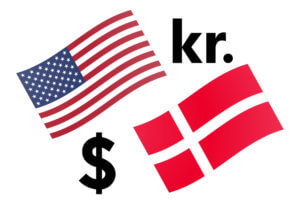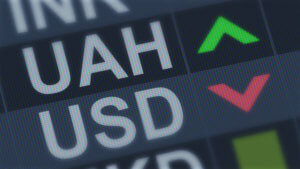Introduction
USD/MAD is the abbreviation for the US dollar against the Moroccan Dirham. This pair is classified as an emerging currency pair in the forex market. In this pair, USD is the base currency, and MAD is the quote currency. Typically. It is seen that this pair has pretty low volatility and liquidity. However, it can still be traded under certain conditions.
Understanding USD/MAD
The market price of this currency pair determines the value of MAD that is equivalent to one USD. For instance, if the current market price of USD/MAD is 9.5867, then these many Moroccan Dirhams are required to purchase one USD.

Spread
The difference between the bid price and the ask price is referred to as the spread. This is the primary way through which brokers generate revenue. Spread is a variable and is different with different brokers. It also differs based on the execution model used by the broker.
ECN: 35 pips | STP: 40 pips
Fees
The commission paid on each trade is the fee on that trade. Note that, the concept of the fee is only ECN accounts and not STP accounts. The fee on ECN accounts is typically between 5-10 pips.
Slippage
Slippage is the difference between the price intended by the client and the price that is actually executed by the broker. There is this difference due to two reasons:
- Market’s volatility
- Broker’s execution speed
Trading Range in USD/MAD
The trading range is the tabular representation of the volatility of the market in different timeframes. These values help in assessing the minimum, average, and maximum profit/loss in six different timeframes.

Procedure to assess Pip Ranges
- Add the ATR indicator to your chart
- Set the period to 1
- Add a 200-period SMA to this indicator
- Shrink the chart so you can assess a large time period
- Select your desired timeframe
- Measure the floor level and set this value as the min
- Measure the level of the 200-period SMA and set this as the average
- Measure the peak levels and set this as Max.
USD/MAD Cost as a Percent of the Trading Range
The total cost of the trade is calculated by adding up the slippage, spread, and the trading fee. It is not constant but varies based on the volatility of the market. Below are tables that represent how costs vary for different timeframes and volatilities.
ECN Model Account
Spread = 35 | Slippage = 3 |Trading fee = 3
Total cost = Slippage + Spread + Trading Fee = 3 + 35 + 3 = 41

STP Model Account
Spread = 40 | Slippage = 3 | Trading fee = 0
Total cost = Slippage + Spread + Trading Fee = 3 + 40 + 0 = 43

The Ideal way to trade the USD/MAD
Starting off from the trading range table, we can see that the volatility of this pair is quite high. The spread, too, is higher than other emerging pairs. So, it is not really ideal to trade at any time in 24 hours.
When we have a look at the cost percentage tables, we can see that the percentages are high in the minimum column, and low in the max column. This implies that the costs are high during low volatilities, and costs are low during high volatilities. So, the best time to trade this pair is when the volatility is around the average values because this assures decent volatility as well as affordable costs.
Furthermore, the costs can be reduced by placing orders as ‘limit’ instead of ‘market’. In doing so, the slippage on the total costs will be made zero. So, spread and trading fee will be the only factors involved in calculating the total cost.






